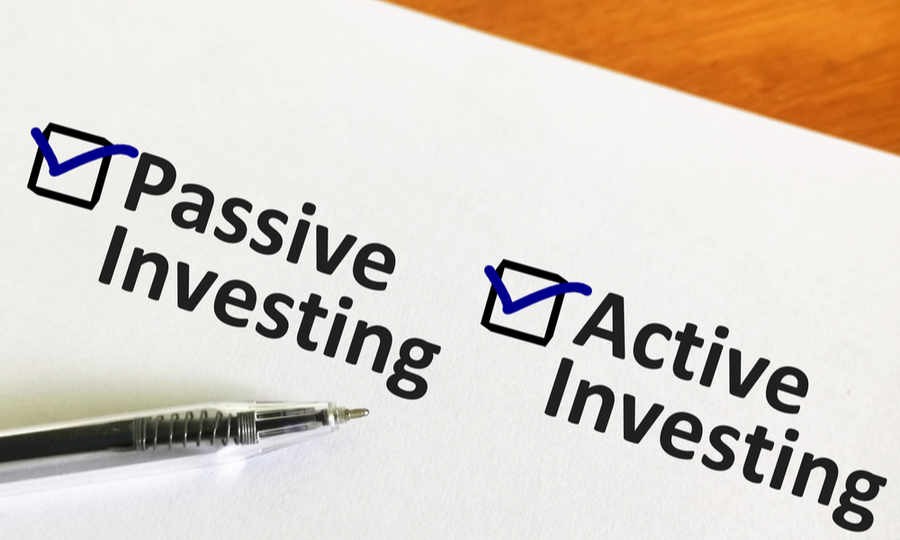I WANT
RELATED LINKS
I WANT
RELATED LINKS
RELATES LINKS
I WANT
RELATES LINKS
Services
Related Links
Use and Management of Cookies
We use cookies and other similar technologies on our website to enhance your browsing experience. For more information, please visit our Cookies Notice.
- Personal Banking
- Stories & Tips
- Grow Your Wealth
- Passive vs Active investment, which one is better for you?
- Personal Banking
- ...
- Passive vs Active investment, which one is better for you?
Passive vs Active investment, which one is better for you?
13-07-2021
Before making any investment decision, you should get to know the different types and management styles of mutual funds. In terms of management strategy, there are passive funds and active funds. Keep reading to find out which one is better for your investment style.
Passive funds, aka index funds
Passive funds, also known as index funds, are mutual funds with an investment goal of generating returns matching stock index performance as closely as possible. For example, if the SET Index is +5%, returns from a SET index fund should be very close to that level.
Index funds are mostly categorized by index or investment benchmarks for their return goal, such as the SET, SET100, SET50, SETHD, etc. Investors can spot them by their names. For example, passive funds with the SET50 as their index benchmark will include SET50 in their name. Investment policies will also be stated in the fund prospectus.
Some of you may be wondering, ‘what good are index funds if they do not try to beat markets?’ The answer to that is that we believe that stock markets are effective and that every stock on a market has a reasonable price. So, investing in index funds may be the right solution for you. It is useless to try to beat markets when you believe that stock prices are reasonable.
Investing in index funds involves investing in stocks across the board following an index benchmark, without selecting “the best” stocks or avoiding “the worst” ones. Instead, your investment ‘goes with the flow.’ Let’s take a look at the pros and cons.

Pros
- Index funds have the lowest risk among mutual funds – matching the performance of their corresponding index.
- Index funds have lower costs and fees than active funds.
- Index funds do not need a fund manager for stock selection, so there is less risk of selecting the wrong stocks.
- Investors make long-term investments in index funds, with portfolios usually only requiring adjustment every six months to one year.
Cons
- Index funds need to invest in stocks all the time and cannot cut down or sell stocks to sit on cash. In a bull, market returns can be exceptional, but during bear markets, returns will go down. In these types of situations, active funds may be more advantageous, as fund managers can adjust portfolios based on market trends.
- Investors cannot expect to beat the markets because the investment goal of index funds is to “generate returns as close to the returns on a stock index as possible.”
- Index funds are recommended for investors interested in long-term investment in stocks, with returns and risks at the same level as stock market indices, or those who don’t have the time or inclination for stock analysis and the selection or don’t want to rely on fund managers’ stock selections, because most index funds cannot beat markets.

Active funds
Active funds are ‘active’ in the sense that they are proactive mutual funds that mainly rely on a fund manager’s stock selection capabilities, with an investment goal of generating returns higher than index benchmarks. For example, an active SET fund’s investment goal might be to earn returns higher than the performance of the SET index. There are two types of investment analysis by fund managers:
1. Top-down analysis: Macroeconomics and industries are analyzed before asset fundamentals to consider whether the timing is right for investment.
2.Bottom-up analysis: Asset quality is analyzed first, and then sentiments in its industry and investment timing, respectively, in a direction opposite to top-down analysis.
Active funds’ pros and cons are opposite those of passive funds.
Active funds are recommended for investors who want capable fund managers in charge of high-return funds in order to beat markets in the long run. Despite higher fees, investors are willing to pay them as they are confident in a fund managers’ capability. However, investors need to select the right active funds. Always remember that most stock funds cannot beat the market.
In short, passive and active funds have different pros and cons. Investors need to select investment options based on their investment goals, time periods, and risk appetites. Always carefully study a fund’s prospectus before making an investment decision.
Nipapun Poonsateansup, CFP®, ACC
Independent financial planner, author, speaker
